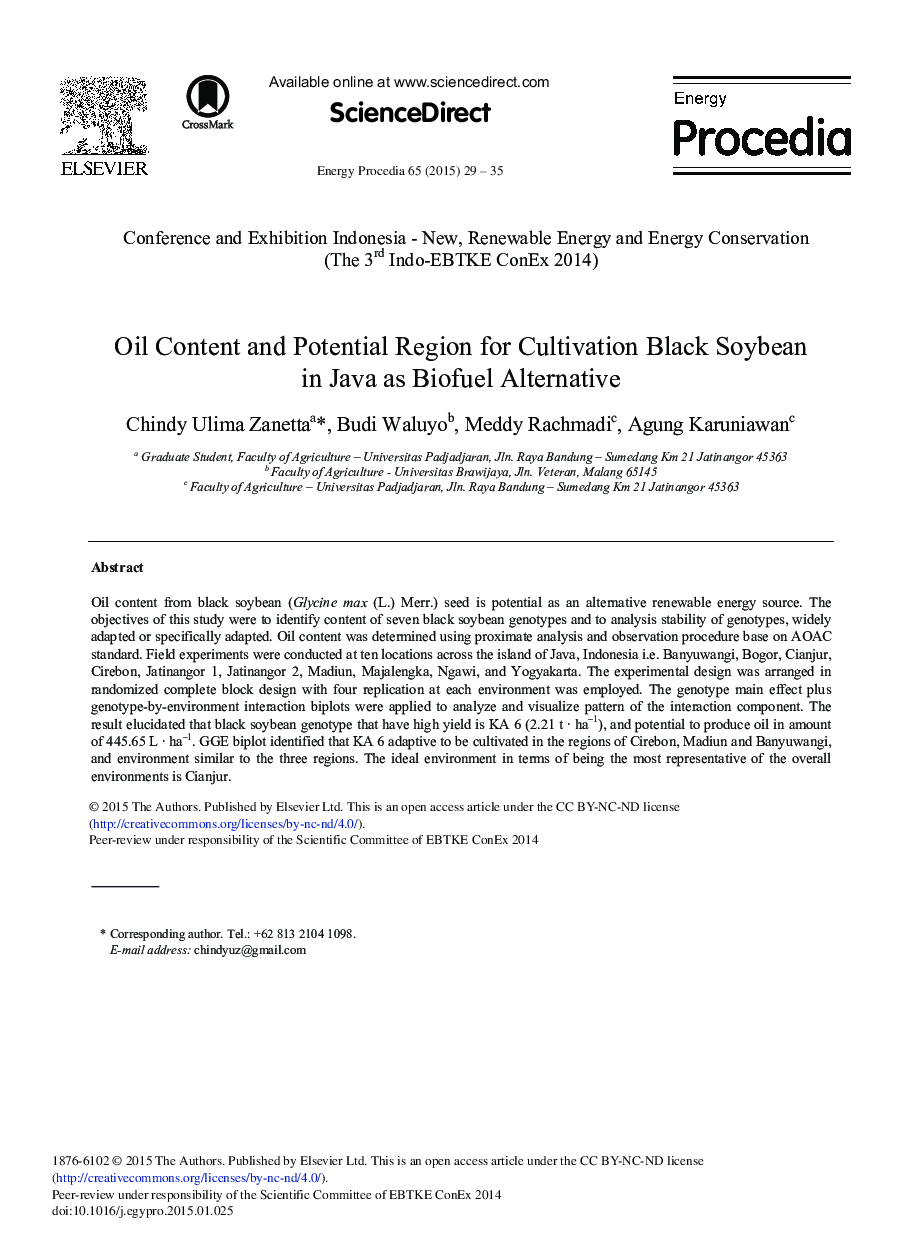| Article ID | Journal | Published Year | Pages | File Type |
|---|---|---|---|---|
| 1510038 | Energy Procedia | 2015 | 7 Pages |
Oil content from black soybean (Glycine max (L.) Merr.) seed is potential as an alternative renewable energy source. The objectives of this study were to identify content of seven black soybean genotypes and to analysis stability of genotypes, widely adapted or specifically adapted. Oil content was determined using proximate analysis and observation procedure base on AOAC standard. Field experiments were conducted at ten locations across the island of Java, Indonesia i.e. Banyuwangi, Bogor, Cianjur, Cirebon, Jatinangor 1, Jatinangor 2, Madiun, Majalengka, Ngawi, and Yogyakarta. The experimental design was arranged in randomized complete block design with four replication at each environment was employed. The genotype main effect plus genotype-by-environment interaction biplots were applied to analyze and visualize pattern of the interaction component. The result elucidated that black soybean genotype that have high yield is KA 6 (2.21 t · ha–1), and potential to produce oil in amount of 445.65 L · ha–1. GGE biplot identified that KA 6 adaptive to be cultivated in the regions of Cirebon, Madiun and Banyuwangi, and environment similar to the three regions. The ideal environment in terms of being the most representative of the overall environments is Cianjur.
